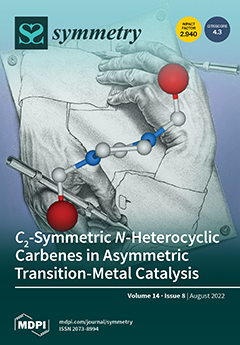The two-dimensional turbulent thermal free jet is formulated in the boundary layer approximation using the Reynolds averaged momentum balance equation and the averaged energy balance equation. The turbulence is described by Prandtl’s mixing length model for the eddy viscosity
with mixing length
l and eddy thermal conductivity
with mixing length
. Since
and
are proportional to the mean velocity gradient the momentum and thermal boundaries of the flow coincide. The conservation laws for the system of two partial differential equations for the stream function of the mean flow and the mean temperature difference are derived using the multiplier method. Two conserved vectors are obtained. The conserved quantities for the mean momentum and mean heat fluxes are derived. The Lie point symmetry associated with the two conserved vectors is derived and used to perform the reduction of the partial differential equations to a system of ordinary differential equations. It is found that the mixing lengths
l and
are proportional. A turbulent thermal jet with
and
but vanishing kinematic viscosity
and thermal conductivity
is studied. Prandtl’s hypothesis that the mixing length is proportional to the width of the jet is made to complete the system of equations. An analytical solution is derived. The boundary of the jet is determined with the aid of a conserved quantity and found to be finite. Analytical solutions are derived and plotted for the streamlines of the mean flow and the lines of constant mean thermal difference. The solution differs from the analytical solution obtained in the limit
and
without making the Prandtl’s hypothesis. For
and
a numerical solution is derived using a shooting method with the two conserved quantities as targets instead of boundary conditions. The numerical solution is verified by comparing it to the analytical solution when
and
. Because of the limitations imposed by the accuracy of any numerical method the numerical solution could not reliably determine if the jet is unbounded when
and
but for large distance from the centre line,
and
and the jet behaves increasingly like a laminar jet which is unbounded. The streamlines of the mean flow and the lines of constant mean temperature difference are plotted for
and
.
Full article





